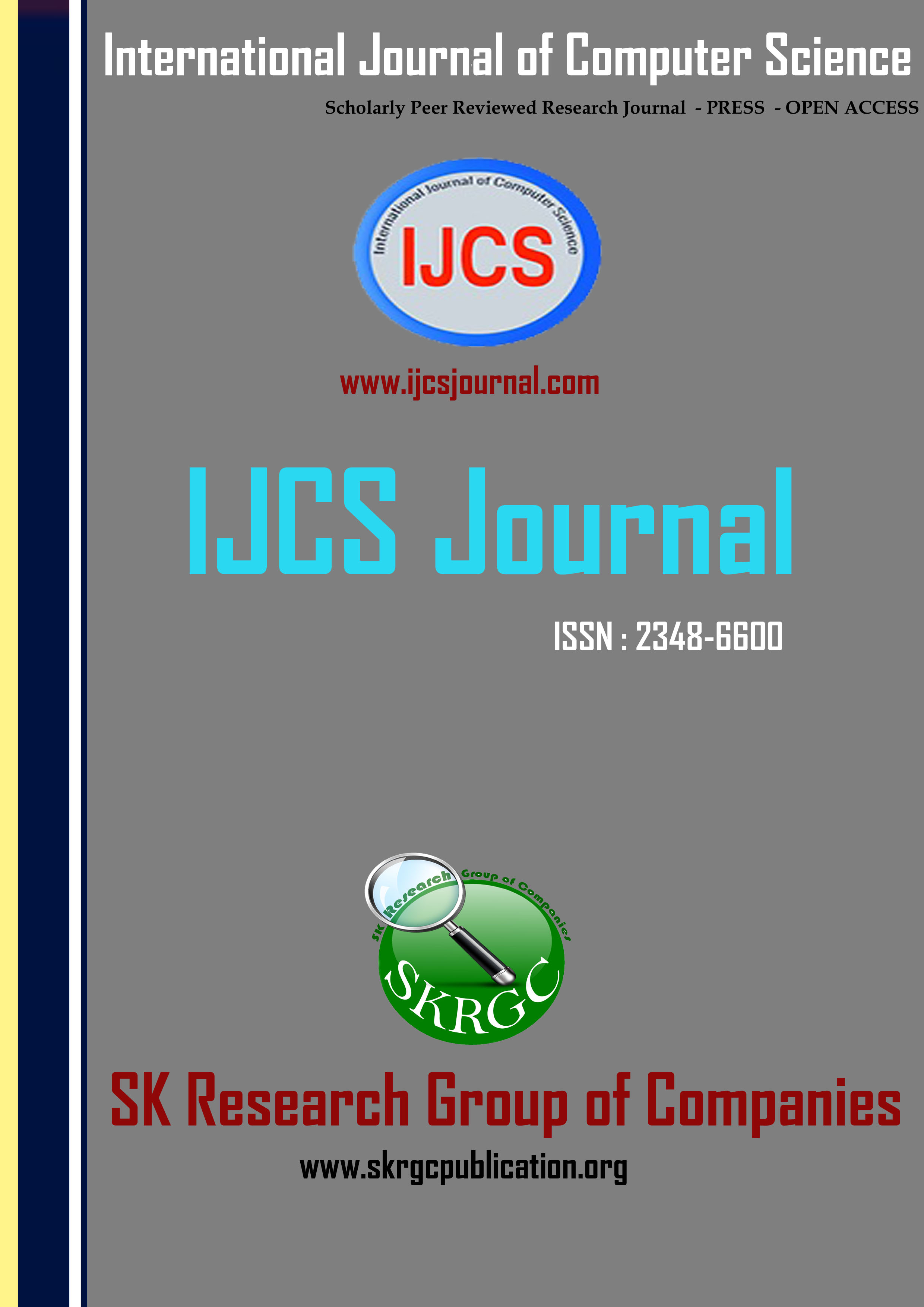SEPARATE DATA EXTRACTION IN ENCRYPTED IMAGES BY REVERSIBLE DATA HIDING USING SIRDS
International Journal of Computer Science (IJCS) Published by SK Research Group of Companies (SKRGC)
Download this PDF format
Abstract
Reversible data hiding used to data hidden process in image and also can recover after analyze hidden data in cover image. This RDH schema provides the secrecy of user data’s and also its encoded cover image. Previous methods embedding data in cover(secure) image after retrieving process may be issue is to produced an some errors on data extraction time. most important problem is earlier scheme information hidden in cover image using RDH, hence data retrieval process time were produced an free of errors. In this proposed scheme make SIRDS as secrecy image is share of visual cryptography scheme to reduce transaction risk for both forwarder and receiver like secure information sharing.SIRDS Encoding technique modifies image pixel values using the random dots in the event according to the B-VCS to produce non pixel expansion shares of the B-VCS. Modifying the pixel free dots using a SIRDS will degrade the visual quality of the rebuilder substance. Here, recommend for these model that is based on the visual feature of cover image SIRDS working is based on construction rules for a (2, n)-BVCS that maximize the cover image contrast and recovered data strength in the cover image using the B-VCS. SIRDS different type of picture separation after the data bit which was hiding multiple set of pixel, For this the data retrieval method? require the index position of those blocks which were considered in hiding process and the pixel pairs position where the data is hidden as the input. The experimental results for our proposed method offers better performance over previous work.
References
[1] M. Naor and A. Shamir, ?Visual cryptography,? Advances in Cryptology—EUROCRYPT (Lecture Notes in Computer Science). New York, NY, USA: Springer-Verlag, 1995, pp.1–12.
[2] R. Ito, H. Kuwakado, and H. Tanaka, ?Image size invariant visual cryptography,? IEICE Trans. Fundam. Electron., Commun., Comput. Sci., vol. E82-A, no. 10, pp. 481–494, 1999.
[3] C. N. Yang, ?New visual secret sharing schemes using probabilistic method,? Pattern Recognit. Lett., vol. 25, no. 4,pp. 481–494, Mar. 2004.
[4] P. L. Chiu and K. H. Lee, ?A simulated annealing algorithm for general threshold visual cryptography schemes,? IEEE Trans. Inf. Forensics Security, vol. 6, no. 3,pp. 992–1001, Sep. 2011.
[5] J. Tian, ?Reversible data embedding using a difference expansion,? IEEE Trans. Circuits Syst. Video Technol., vol.13, no. 8, pp. 890–896, Aug. 2003.
[6] Z. Ni, Y. Shi, N. Ansari, and S. Wei, ?Reversible data hiding,? IEEE Trans. Circuits Syst. Video Technol., vol. 16, no. 3, pp. 354–362, Mar. 2006.
[7] D.M. Thodi and J. J. Rodriguez, ?Expansion embedding techniques for reversible watermarking,? IEEE Trans. Image Process., vol. 16, no. 3, pp. 721–730, Mar. 2007.
[8] X. L. Li, B. Yang, and T. Y. Zeng, ?Efficient reversible watermarking based on adaptive prediction-error expansion and pixel selection,? IEEE Trans. Image Process., vol. 20, no. 12, pp. 3524–3533, Dec. 2011.
[9] P. Tsai, Y. C. Hu, and H. L. Yeh, ?Reversible image hiding scheme using predictive coding and histogram shifting,? Signal Process., vol. 89, pp. 1129–1143, 2009.
[10] L. Luo et al., ?Reversible imagewatermarking using interpolation technique,? IEEE Trans. Inf. Forensics Security,vol. 5, no. 1, pp. 187–193, Mar. 2010.
[11] V. Sachnev, H. J. Kim, J. Nam, S. Suresh, and Y.-Q. Shi,?Reversible watermarking algorithm using sorting andprediction,? IEEE Trans. Circuits Syst. Video Technol., vol.19, no. 7, pp. 989–999, Jul. 2009.
[12] A. J. Menezes, P. C. van Oorschot, and S. A. Vanstone, Handbook of Applied Cryptography. Boca Raton, FL, USA:CRC, 1996.
[13] K. Hwang and D. Li, ?Trusted cloud computing with secure resources and data coloring,? IEEE Internet Comput.,vol. 14, no. 5, pp. 14–22, Sep./Oct. 2010.
[14] M. Johnson, P. Ishwar, V. M. Prabhakaran, D.Schonberg, and K. Ramchandran, ?On compressing encrypted data,? IEEE Trans. Signal Process., vol. 52, no. 10, pp. 2992– 3006, Oct. 2004.
[15] T. Guo, F. Liu, and C. Wu, ?k out of k extended visual cryptography scheme by random grids,? Signal Process., vol.94, pp. 90–101, Jan. 2014.
[16] Z. Zhou, G. R. Arce, and G. D. Crescenzo, ?Halftone visual cryptography,? IEEE Trans. Image Process., vol. 15,no. 8, pp. 2441–2453,Aug. 2006.
[17] Z. Wang, G. R. Arce, and G. D. Crescenzo, ?Halftone visual cryptography via error diffusion,? IEEE Trans. Inf.Forensics Security, vol. 4, no. 3, pp. 383–396, Sep. 2009.
[18] F. Liu and C. Wu, ?Embedded extended visual cryptography schemes,? IEEE Trans. Inf. Forensics Security,vol. 6, no. 2, pp. 307–322, Jun. 2011.
[19] H. W. Thimbleby, S. Inglis, and I. H. Witten,?Displaying 3D images: Algorithms for single image randomdot stereograms,? Computer, vol. 27, no. 10, pp. 38–48, Oct.1994.
[20] W. Zhou and A. C. Bovik, ?A universal image quality index,? IEEE Signal Process. Lett., vol. 9, no. 3, pp. 81–84,Mar. 2002.
Keywords
RDH, Privacy Protection, SIRDS, VCS, Pixel Expansion.

